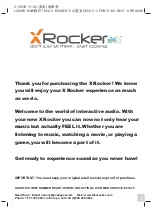
Manual, F/T Sensor, Ethernet Axia
Document #9620-05-C-Ethernet Axia-02
Pinnacle Park • 1031 Goodworth Drive • Apex, NC 27539 • Tel:+1 919.772.0115 • Fax:+1 919.772.8259 •
C-65
Table 8.3—Secondary “S” or “C” Commands
Category
Secondary
Command
or
Specifier
Notes
Format
>
The data is displayed in a formatted human-readable output,
for example: lined-up columns. “>” is the default setting.
<
The data is displayed in a compressed output that has no
leading zeros, trailing zeros, or unnecessary blanks. This
output is intended for high-speed applications that are used
in an automated setting.
Additional inputs
to aid in the
development
of a software
program
S
This command specifies a CRC.
#
This command specifies a sample counter that is
incremented each time that a “c” or “s” line is printed.
@
This command specifies an ADC read counter that is
incremented each time that the ADC is read.
;
This command uses a “,” (comma) rather than a “ “ (space)
to separate data values.
Troubleshooting
!
This command specifies the 32-bit status code. Refer
to
Section 8.4.4—How to Interpret the Output from “!”
.
8.4.3
Examples of Secondary Commands (Specifiers)
The following are examples of an “S” or “C” command with specifiers:
1.
C XTY is interpreted as:
user:
C XTY
response:
0.001 N
0.0009 Nm
a. The C is a command for reporting continuous lines of data.
b.
The X specifies printing F
x
, because force is the default.
c.
The T specifies printing torques whenever an X, Y, Z, or M is seen from now on
(on this line).
d.
The Y specifies printing T
y
.
2.
C TXY is interpreted as:
user:
C TXY
response:
0.0009 Nm
0.0009 Nm
a. The C is a command for reporting continuous lines of data.
b.
The T specifies printing torques whenever an X, Y, X, or M is seen from now on
(on this line).
c.
The X specifies printing T
x
.
d.
The Y specifies printing T
y
.
















































